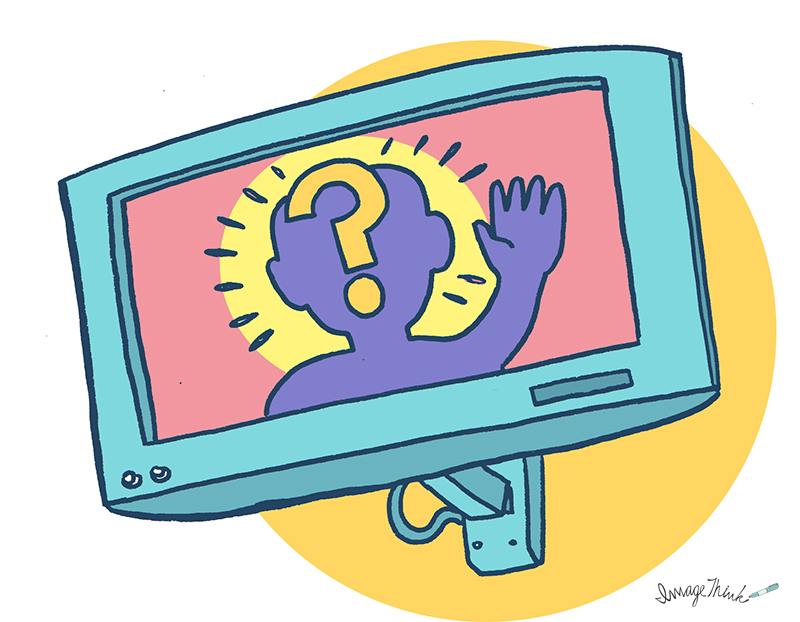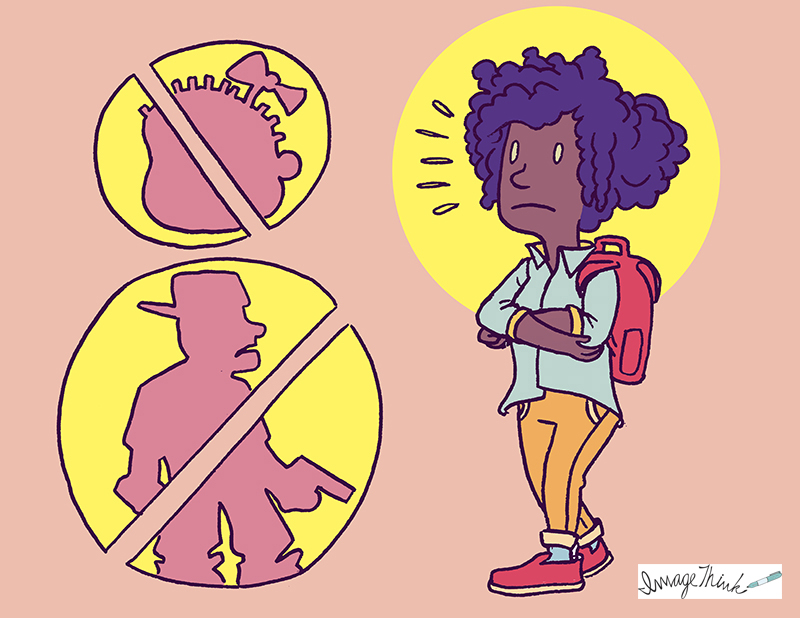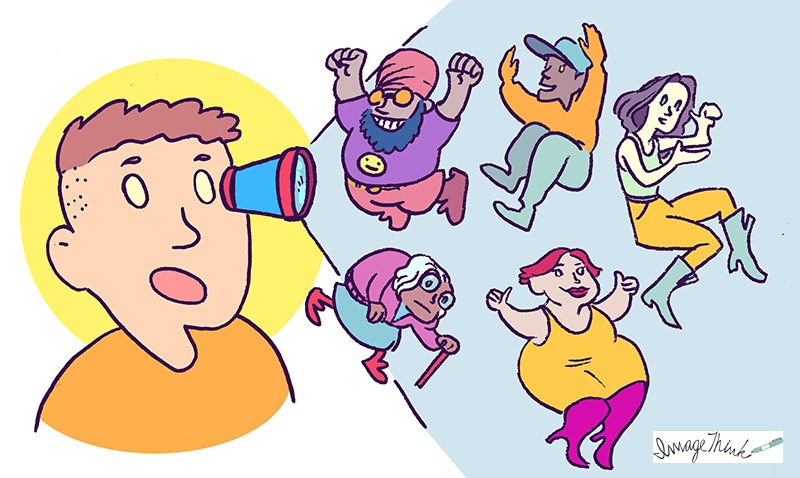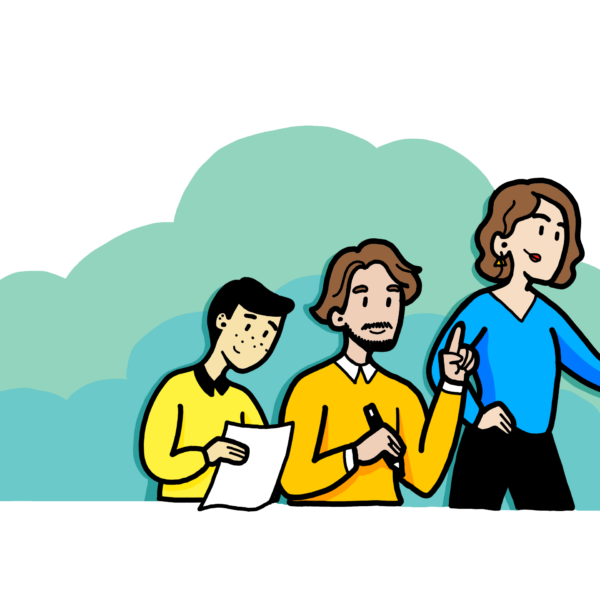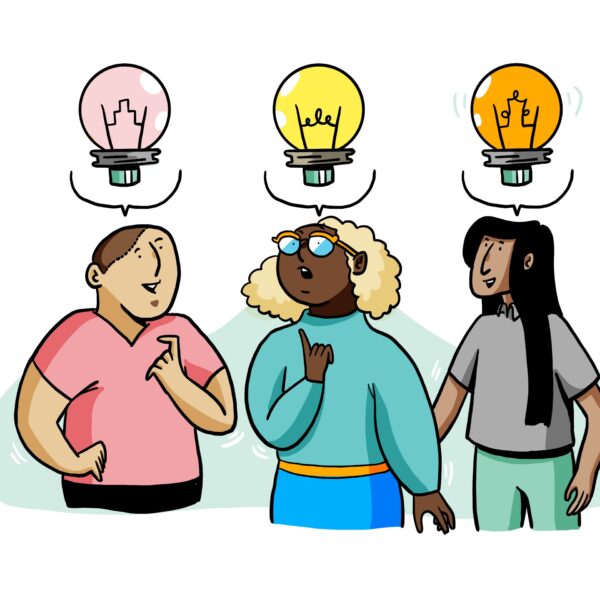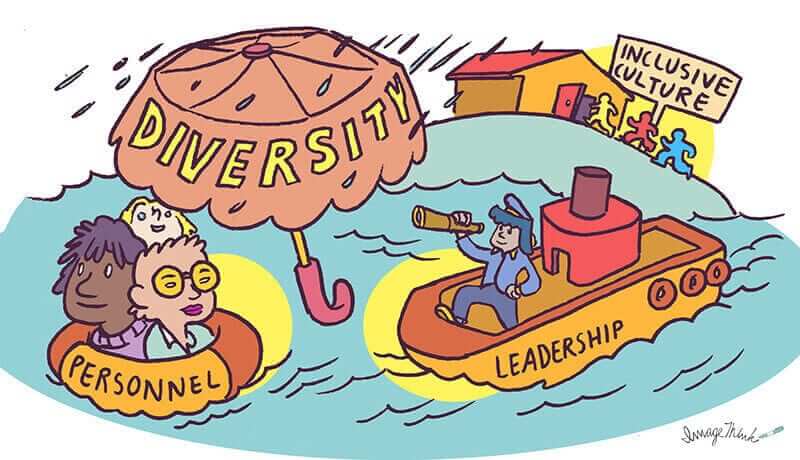
UPDATED 06/08/2020: With the eyes of the world on the United States unlike ever before, and demonstrators around the world protesting America’s racist policing practices and condemning centuries of violence against black bodies, it is more important than ever before to commit to equity, inclusion, representation, and reparation.
At ImageThink, we like to say that “she who holds the pen, holds the power,” which comes with the responsibility of representing all people and ideas with equal weight and consideration.
While everyone should seek to understand differing perspectives and experiences, as visual strategists we have a particular responsibility to investigate what picturing “diversity” truly means, in all its forms.
Like any visual media–from movies to TV to print advertising – the way a graphic recorder chooses to represent an individual can have a meaningful impact on how that person, or even an entire group or culture, is perceived in real life.
The information graphic recorders capture from discussions, and the way graphic recorders capture it can either bolster and amplify a perspective, or flatten it out.
Graphic recorders listen at a professional level to the nuances of a conversation, and we have a responsibility to think carefully about the stories we hear and the unique perspective of the people telling them.
A visual practitioner with an empathic ear and an informed frame of reference can get at the heart of a story, illuminating insights beyond its surface.
We have been honored to be in a position to witness the incredible resurgence of conversations, panels, and initiatives focused towards diversity and everything that falls under the term’s umbrella. That’s true not just in media and social forums, but in the conferences and internal sessions for the businesses we regularly support.
“Diversity” is a term that, in the context of organizations and institutions, covers a number of issues, including workplace personnel and leadership, cultivating an inclusive culture, and searching for talent from underrepresented demographic pools.
We’ll focus on this in terms of graphic facilitating and media. When we talk about diversity in images, questions may arise in terms of WHO is being shown, HOW they are shown, and WHAT is the impact of those depictions.
How those questions are answered affects everything from how we interact with each other, to how we understand ourselves.
These issues have a big impact on the engagements we support as graphic recorders; for instance, how well brainstorm and strategy sessions inside a company are conducted, and how successful a company meeting be when all of the available input and ideas are on the floor.
First, the WHO query:
When you watch a TV show, look at ads, play videos, read comics, and so forth, a good thing to think about is the face of the avatar. In other words, who is being used as your point of entry for this particular piece of media?
Can you relate to them? Does their story reflect something that you experience? How inclusive or exclusive is that choice? Example: there are a lot of articles out about the importance of representation in the casting of people of color, LGBTQ actors, and women in lead roles in Hollywood movies, since there is a still a dearth of stories that show experiences and perspective outside of a very narrow lens.
Can a genderqueer black woman be a steampunk fantasy hero? Can an Asian man be the smoking hot lead in a romantic piece?
The answer to both questions is “DUH”, and including those faces can help us move beyond the mental restraints that come with preconceived notions of who can be what.
The next question is HOW:
There is an interesting history of cartooning, which runs parallel to the visual language of graphic recording and has (because of a historical context, erasure, and systemic discrimination) a codex of icons that steer towards a white, heteronormative default.
Obviously that slice of humanity only represents a fraction of the US population (and a REALLY small portion of the worldwide population), but enjoys a disproportionately rich variety of depictions.
The visual vocabulary for non-white, non-male, non-cisgendered individuals, however, is still a work in progress. In fact, there’s still a lot of work to be done to veer away from harmful, stereotypical imagery.
It’s a lofty task, but the people up for meeting it are incredibly passionate about filling in the gaps.
Lastly, WHAT is the impact:
When doing work as a graphic recorder, it’s imperative to make sure that the world created on a white board, the visual summary of a meeting, is one that has room for everyone.
It’s important that our graphic recording outputs and whiteboard animation videos give us all a broader view of the world that we live in, and the people in it. At ImageThink we each try to employ our unique perspectives and experiences as a tool to amplify ALL of the voices in the room.
Opening up representation in graphic recording…
…is just a piece of the larger task at hand: to create a culture of inclusivity and empathy that embraces and makes room for different perspectives.
…is a task that takes an active effort from everyone, and a willingness to engage in what could sometimes be an uncomfortable conversation.
…is an infinitely enriching and the hallmark of any truly vibrant society.
